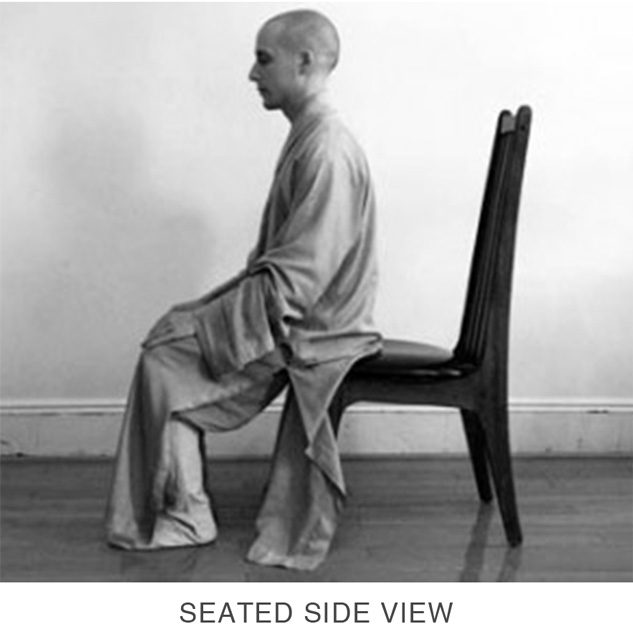
As it happens, today, the 23rd of August, in 1335 is the anniversary of the death of Heilwige Bloemardinne, also known as Heilwijch Blomart. Born to wealth in Brussels Heilwige was a popular spiritual teacher and mystic.
While throughout her lifetime she was protected, appears to have authored a book, and definitely many pamphlets, we really only know her teachings today through the cracked mirror of a harsh critic, John of Ruysbroeck.
While some of her defenders allege there was personal animosity on Ruysbroeck’s part, fueling his polemics, it’s important to note he is also considered a major mystic within the Catholic tradition.
We appear to know two things about her teachings. The first is seraphic love. That is a love which is angelic and pure. She seemed to teach the possibility of an absorption into God. Which captures my imagination as it one of the many variations of nonduality we find within the world’s religious cultures. The other, and the teaching that Ruysbroeck seemed especially concerned with is Quietism.
Ruysbroeck writes, “Thus they are poor in spirit for they are without will of any sort having forsaken everything and making no choices of their own.” This pure passivity in the presence of the divine is a hallmark of Quietism.
Quietism as a technical term is used for a religious movement in seventeenth century western Europe, most associated with the Spanish mystic Miguel de Molinos and his admirer Madam Guyon. I am very interested in Quietism and especially its practices. They bear a similarity to Zen’s disciplines of pure presence. And they raise questions about potential problems in the discipline.
For Zen the issue turns on Original Awakening.
Original Awakening is derived from the doctrine of Tathagatagarba the assertion of a potential to Buddhahood, but later describing the exact identity of the causal world and awakening. It is found among other sources in the Mahayana Mahaparinivara Sutra, the Avatamsaka Sutra, and the Awakening of Faith, and rests at the foundations of Zen’s understanding of awakening. We are from before the creation of the stars and planets, awake.
The thirteenth century master Eihei Dogen’s personal question, what drove his spiritual pursuit was the question if everything is originally awakened, then why striving, why practice? Which of course is a way to look at the Quietist question, as well.
For Dogen the resolution was found in the identity of practice and our awakening. He wrote
“The practice of Zen has nothing whatever to do with the four bodily attitudes of moving, standing, sitting, or lying down.” So, it isn’t simply a matter of assuming a correct posture. Rather he is inviting us elsewhere. Then he tells us where. “The zazen I speak of is not learning meditation. It is simply the Dharma-gate of repose and bliss. It is the practice-realization of totally culminated enlightenment. It is things as they are in suchness.”
This is what he calls practice-enlightenment. In fact I’ve seen that term rendered without the hyphen, simply reading practiceenlightenment. One word. One thing. In some ways it is taking up the koan of just sitting as if it were a huatou, the single koan one needs for a lifetime of engagement.
What I am sure of is this. You want a classic koan? Show me practiceenlightenment.
Here we’re invited into something that is both an illustration of what Quietism can be, as well as avoiding the challenge of passivity with which the school is associated in Christianity. And passivity is a problem. It is missing a critical point.
And, of course, that’s the shadow of the way of just sitting. People “proof text” the term and warn against “gaining-mind” with unfortunate consequences. We are not being invited into being bumps on some log. Although, sadly, I’ve seen people think that is precisely what shikantaza is. The shadow of Quietism. The heresy, if you will, of Quietism. Certainly, the mistake, and sometimes deadly mistake of Quietism…
I offer an alternative understanding. I think it can be called the truth of Quietism, of original awakening, of presence as something just like the world, dynamic and wild.
With shikantaza we’re given a place to put our great questions, our deep curiosity, our profound longing. Here we’re being invited into a mysterious alchemy of the heart. Yes, gaining-mind does not carry us across the river. And, it is no different than our awakening.
The mystery of bodhicitta, our desire for awakening is discovered as we experience it, and as we surrender it. But, this isn’t surrender in the sense of burying it or throwing it away. Rather it is a transformation into confidence, or trust, or maybe the right word is faith. Here we discover faith as a matter of heart, as an invitation into an ancient love. Master Taizan Maezumi tells us,
“When you do shikantaza, have faith in the fact that your zazen is the same zazen as the zazen of the Buddhas and Patriarchs. Have this kind of faith. Then, just sit. Since your zazen is the same zazen as that of the Buddhas, you don’t need to worry about anything: just sit. Appreciate that your zazen is the zazen of the Buddha. The zazen of Shakyamuni Buddha is okay; the zazen of the Buddhas and Patriarchs is okay. In other words, you are not sitting; Buddha is sitting.”
If we bring our full selves to the matter, we find something breaks open. Well, sometimes breaks open. Sometimes unfolds like a flower. The images both liberate and trap. We must walk carefully. Gently. And fiercely at the same time.
And so Dogen charges us to “Devote your energy to a Way that points directly to suchness.” And, critically he tells us how. “If you concentrate your effort single-mindedly, you are thereby negotiating the Way with your practice-realization undefiled. As you proceed along the Way, you will attain a state of everydayness.”
And so. From before the creation of the stars and planets, we are awake.
And, we must turn our attention to the great matter and come to know for ourselves this ancient, ancient truth.
To see as we sit, the Buddha is sitting. As we reach out a hand, the Buddha is reaching out a hand.
In that we may well find the saving of the world…













